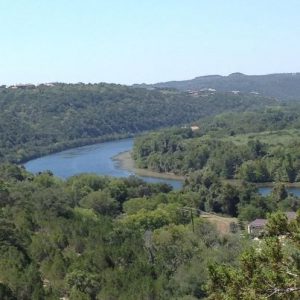If you do anything in or on Lake Austin, I’m sure you share my frustration with the Hydrilla that has been growing out of control for the past two summers. It gets tangled in the prop when boating, creates a “hydrilla island” that’s close to impossible to get off when paddle boarding or kayaking, and feels like swimming through wet christmas trees if you jump in to cool off. I’ve seen the “Moss Monster” parked down by the Freedom Boat Club from time to time but never really realized what it did – or that it was owned and operated by Steiner Residents, Jay and Clifton Chowning. The water in Lake Travis is much warmer than in Lake Austin, and when they release water into Lake Austin via the dam, the warm water and high air temperatures make a perfect breeding ground for the water weed. The Chowning’s “Moss Monster” cuts large patches of hydrilla and pulls it in to a storage reservoir . It is then taken to Home Depot and turned into fertilizer or compost. They work with the government and also for private lakefront homeowners and charge $800 per load of 12,000 lbs plus a $50 fuel charge to provide some temporary relief.
The City of Austin has released thousands of Asian carp into the lake to eat the hydrilla, but is believed that it will take several years for us to see the effect of the carp because they’re just too small to make a dent in the vegetation at this point. The LCRA had been lowering the lake via the dam system annually since the 1950’s to allow waterfront homeowners to perform dock maintenance. This also served to control vegetation by exposing the plants to the air and killing off the leaves and stems by dehydration, providing temporary relief, particularly in the shallow areas where the plants are exposed. Since hydrilla was first discovered in Lake Austin in 1999, lowering the lake has been one component of an ongoing comprehensive plan to fight the non-native plant. In addition, the drawdown helps control Eurasian water milfoil, commonly known as duckweed, which has increased recently. I believe they did not lower the lake last winter due to the drought. The Chownings believe we won’t see a real difference until Lake Travis fills back up, which will lower the temperature in Lake Austin.
In the meantime, we like to sit on the boat and come up with our own creative ways to combat the hydrilla problem – like selling “Lake Austin Hydrilla Bath Scrubs” or “All Natural Hydrilla Smoothies” – we’d make a killing, right??

